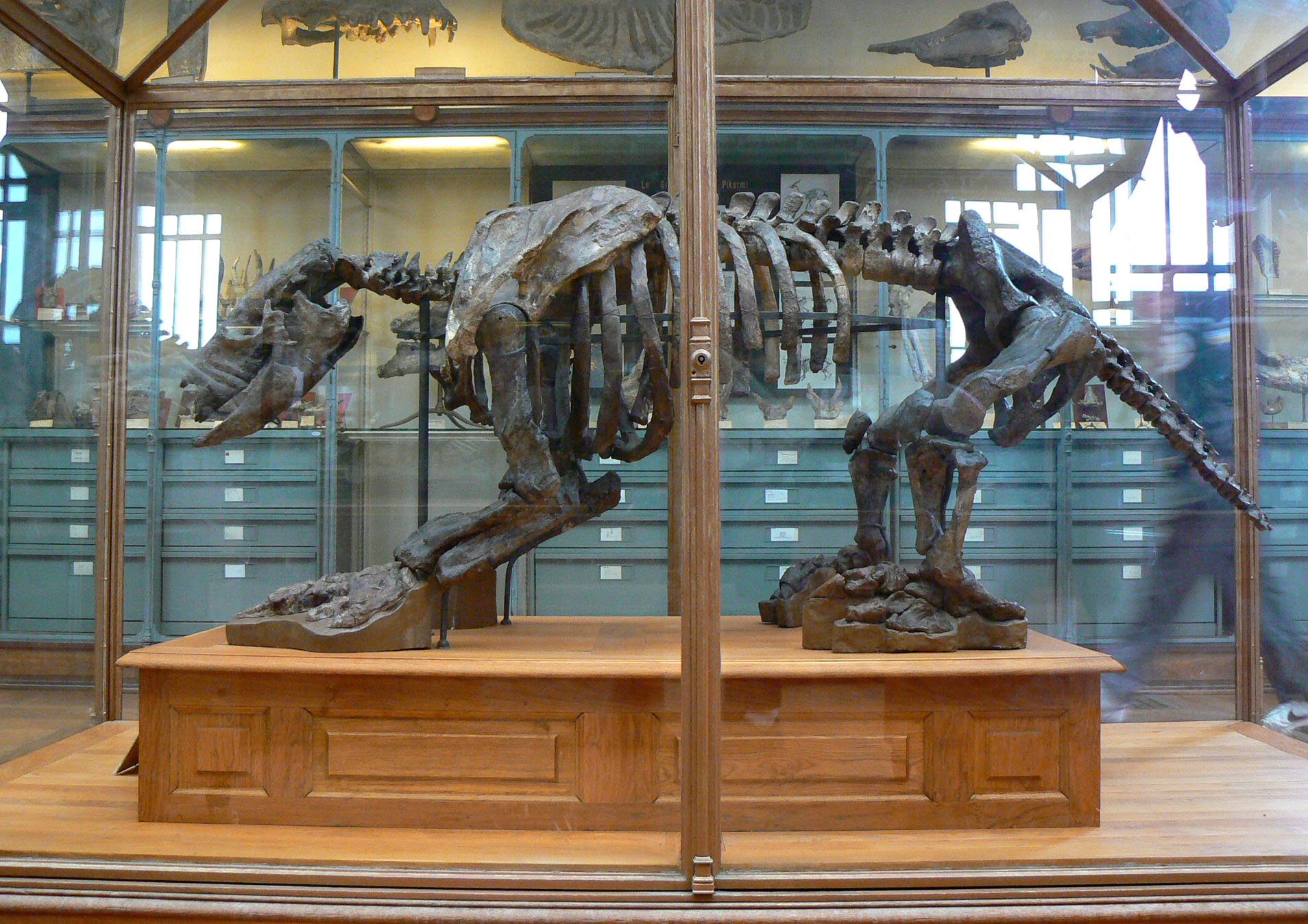- Scelidotherium
Taxobox
name = "Scelidotherium"
fossil_range =Pleistocene

image width = 200px
regnum =Animalia
phylum =Chordata
classis =Mammal ia
ordo =Xenarthra
familia = †Mylodontidae
subfamilia = †Scelidotherinae
genus = †"Scelidotherium"
genus_authority = Owen, 1840
subdivision_ranks =Species
subdivision =
* †"S. leptocephalum" Owen 1840
* †"S. parodii" Kraglievich 1923 "Scelidotherium" is agenus ofSouth American Pliocene -Pleistocene ground sloth s, characterized by an elongated, superficiallyanteater -like head. It is known almost exclusively fromArgentina , but its distribution may have extended intoParaguay andUruguay .In his journal of "
The Voyage of the Beagle ",Charles Darwin reports the finding of a nearly perfect fossil "Scelidotherium" inPunta Alta while travelling overland fromBahia Blanca toBuenos Aires in1832 . He allied it to the "Megatherium ". Owen (1840) recognized the true characters of the remains and named them "Scelidotherium", which means "femur beast" to reflect the distinctive proportions of that skeletal element. They were 1.1 meters tall and might have weighed up to 6000 lbs [Bargo, MS, SF Vizcaíno, FM Archuby, and RE Blanco. 2000. Limb bone proportions, strength and digging in some Lujanian (Late Pleistocene-Early Holocene) Mylodontid ground sloths (Mammalia, Xenarthra). Journal of Vertebrate Paleontology, 20(3):601-610] .References
*aut|Owen, R. (1840) Zoology of the Voyage of the Beagle1, Fossil Mammalia.
Wikimedia Foundation. 2010.
